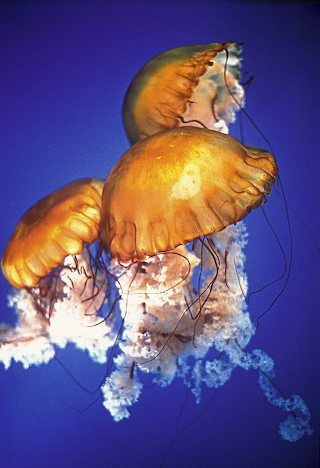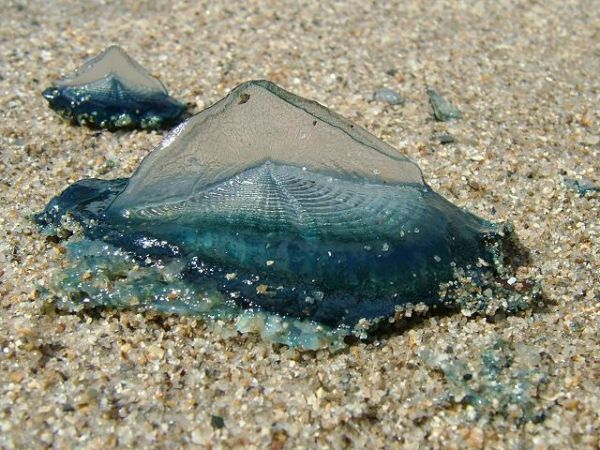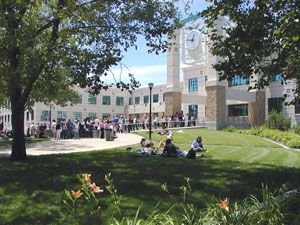6
 The pathogen that causes sudden oak death tends to spread during rainstorms, so with forecasts of a wet winter ahead, now is the time to apply a protective treatment to trees in high-risk areas.
The pathogen that causes sudden oak death tends to spread during rainstorms, so with forecasts of a wet winter ahead, now is the time to apply a protective treatment to trees in high-risk areas.
According to Katie Palmieri, the public information officer for the California Oak Mortality Task Force at UC Berkeley, spraying the protective substance directly onto the trunk of vulnerable oaks is the easier method.
 Injecting the spore-fighting material directly into the oaks is more complicated, in no small part because the process is a little different for each tree.
Injecting the spore-fighting material directly into the oaks is more complicated, in no small part because the process is a little different for each tree.
 The California oak Mortality Task Force has developed guidelines and an instructional video to aid homeowners in the proper application of Agri-Fos as part of the resources available at their website. Below is an illustrated explanation of the pathogen that causes the disease, how it spreads, and the way it affects the trees that get infected.
The California oak Mortality Task Force has developed guidelines and an instructional video to aid homeowners in the proper application of Agri-Fos as part of the resources available at their website. Below is an illustrated explanation of the pathogen that causes the disease, how it spreads, and the way it affects the trees that get infected.

 What segment of California’s population is healthiest? It’s probably not what you would think.
What segment of California’s population is healthiest? It’s probably not what you would think.
 As Alameda County’s Public Health Officer, Dr. Anthony Iton (left) directed efforts to correlate data from death certificates, parole offices, income reports from the national census and other sources and see where they overlapped in his county. And he found a high correspondence to the areas where poverty is most prevalent.
As Alameda County’s Public Health Officer, Dr. Anthony Iton (left) directed efforts to correlate data from death certificates, parole offices, income reports from the national census and other sources and see where they overlapped in his county. And he found a high correspondence to the areas where poverty is most prevalent.
Taking their cue from the social support systems that many immigrant families enjoy, Dr. Iton suggests that public health departments also instigate informal gatherings of residents in impoverished neighborhoods, as an additional tool for improving their collective well-being.
Dr. Iton also co-authored this report (pdf, 87 pages) detailing the relative medical and social factors that shape health outcomes among the population of Alameda County. Similar results apply in Sonoma County and much of California.
 The earliest known forms of written communication have now been traced to eastern Europe, from a long-standing agricultural society that predates the Greeks and Egyptians.
The earliest known forms of written communication have now been traced to eastern Europe, from a long-standing agricultural society that predates the Greeks and Egyptians.
 Joan Marler is Executive Director of the Institute of Archeomythology, an emerging field that integrates a broad array of academic disciplines.
Joan Marler is Executive Director of the Institute of Archeomythology, an emerging field that integrates a broad array of academic disciplines.

The multi-disciplinary field was established byMarler's mentor, Marija Gumbutas (seen here in a 1987 photograph). Marler will talk more about archeomythology at the Science Buzz Café tonight at the youth annex of the Sebastopol Community Center at 7 pm.
The surviving artifacts from this ancient civilization, such as the vase below, suggest it was deeply ritualistic, and Marler believes those rites were enmeshed in their culture of sustainability.


 The closely guarded internal financial workings of the Sonoma State Academic Foundation may be about to see the light of public review.
The closely guarded internal financial workings of the Sonoma State Academic Foundation may be about to see the light of public review.
Robert Karlsrud, dean emeritus of the SSU School of Social Sciences, is concerned that the administration of the Sonoma State University Academic Foundation is concentrated in just a few top officials at the school, and particularly that the finances of the campus and its foundation are directed by the same individual: Laurence Furukawa-Schleret, SSU's Vice President for Administration & Finance and Chief Financial Officer.

SB 218, by San Francisco State Senator Leeland Yee, was prompted in part by the public disclosure of the SSU Foundation’s loans to a former board member. The bill has passed the state legislature and is now awaiting the governor’s signature to become law. Dean Karlsrud says the campus community is also waiting to see if the measure has any real teeth.
Karlsrud's detailed critique of the Foundation's fiscal operations was published online by the Empire Report.
 There may be a lot of beached jellyfish on the sand along the coast these days, but that’s primarily an indicator of a productive year for the strange and ancient creatures.
There may be a lot of beached jellyfish on the sand along the coast these days, but that’s primarily an indicator of a productive year for the strange and ancient creatures.
 Jellyfish occur in many parts of the world, from the tropics to much cooler northern waters, but there are specific types that frequent the northern California coast, such as the "sea nettles" pictured here.
Jellyfish occur in many parts of the world, from the tropics to much cooler northern waters, but there are specific types that frequent the northern California coast, such as the "sea nettles" pictured here.
Carl Menard, Director of Aquatic Resources at the U.C.Davis Bodega Bay Marine Laboratory, says the rich upwelling of nutrients the jellies have been feeding on is not indicative of a possible El Nino in the coming winter, but because of other factors, that can’t be ruled out altogether.
Two other common types of jellyfish often found along the North Coast are the Moon jellies (below left) and the valella valella, which has a sort of "sail" that can catch the breeze on the surface of the sea to propel it. But if it happens to catch on onshore wind, it may end up stranded on a beach.



 Live Radio
Live Radio
